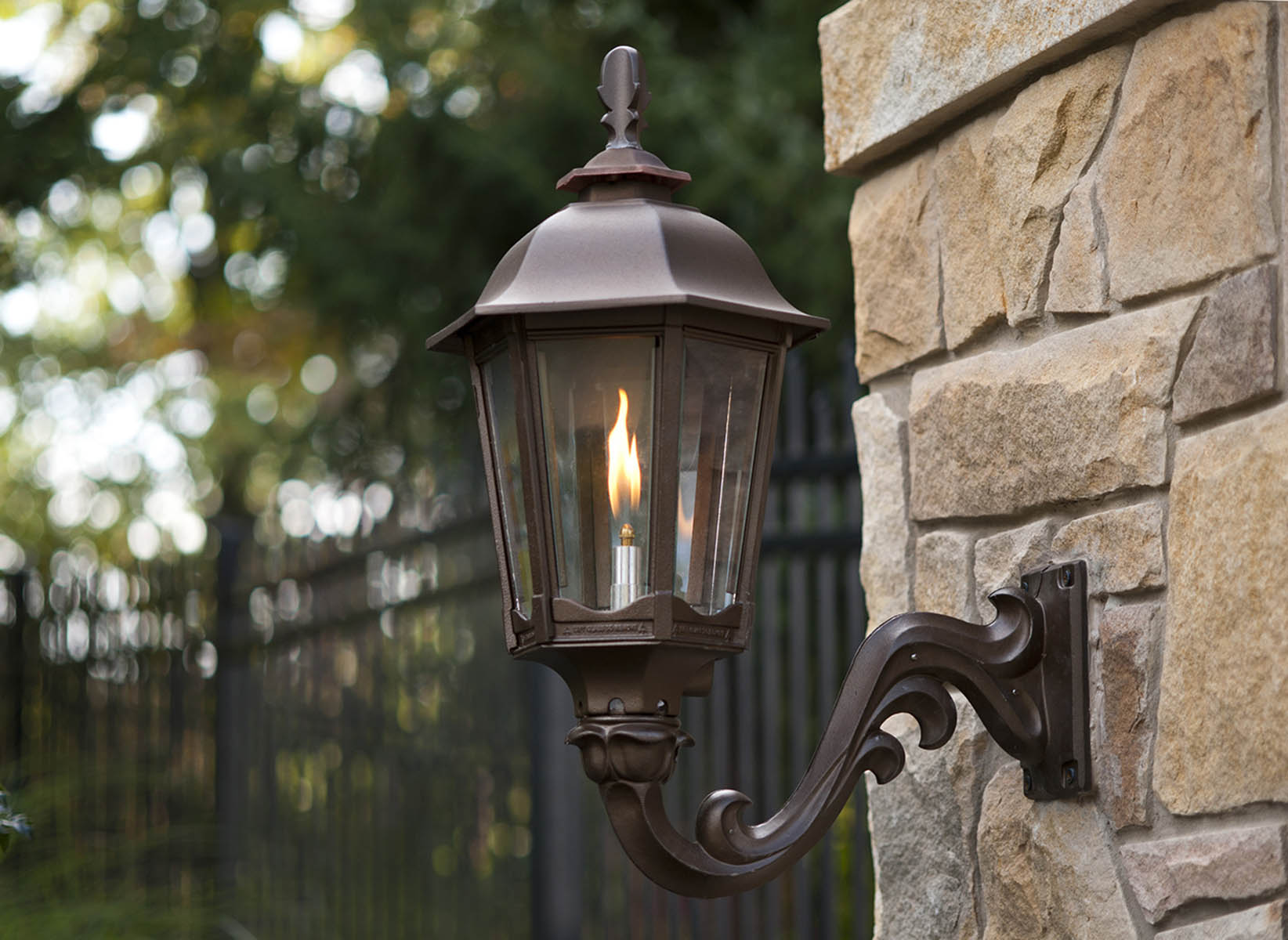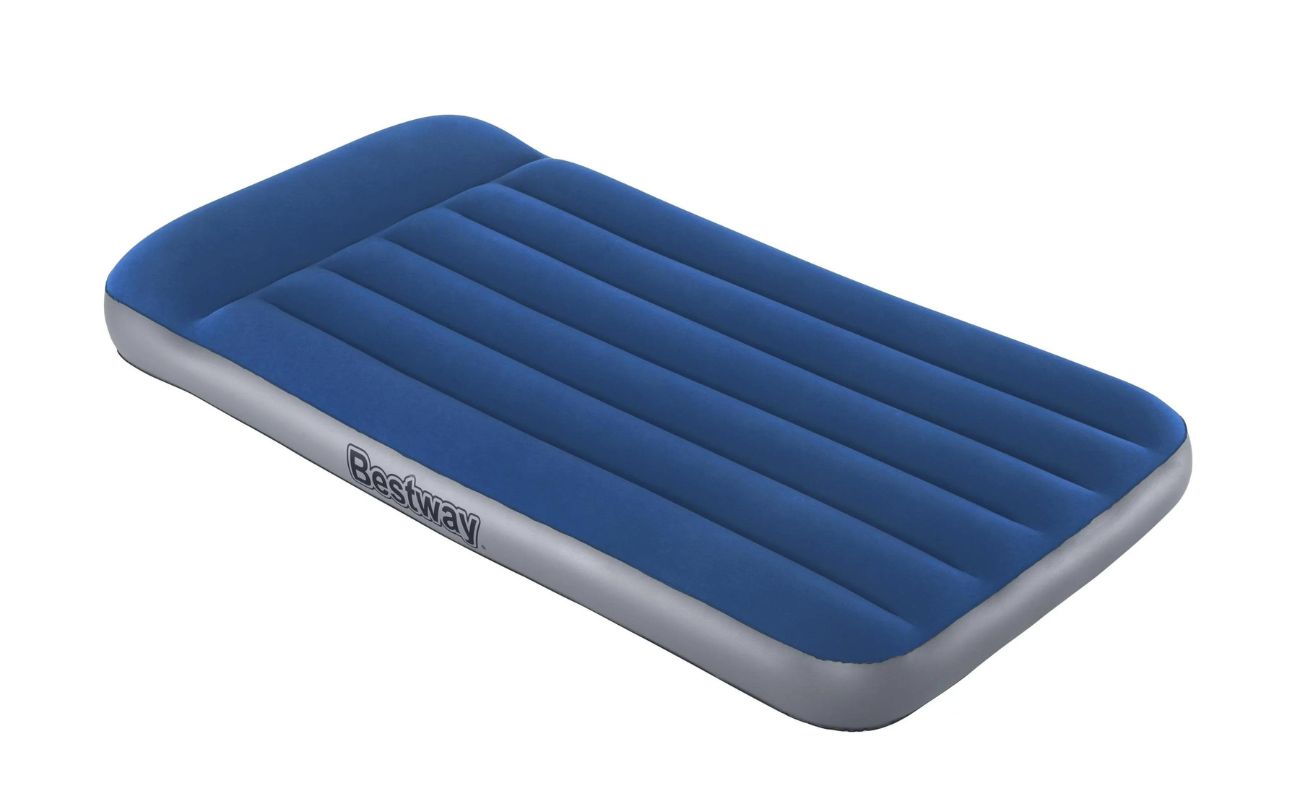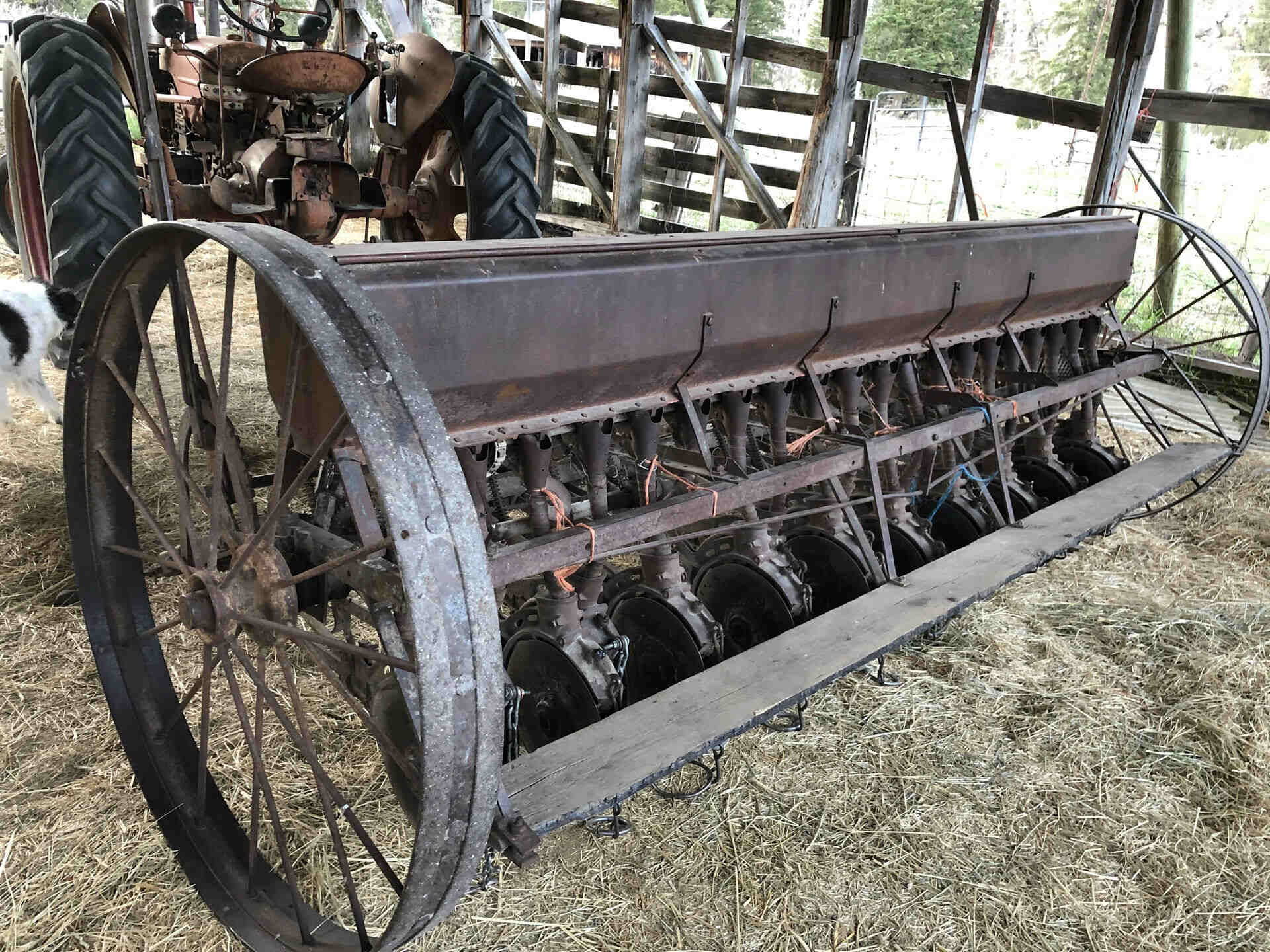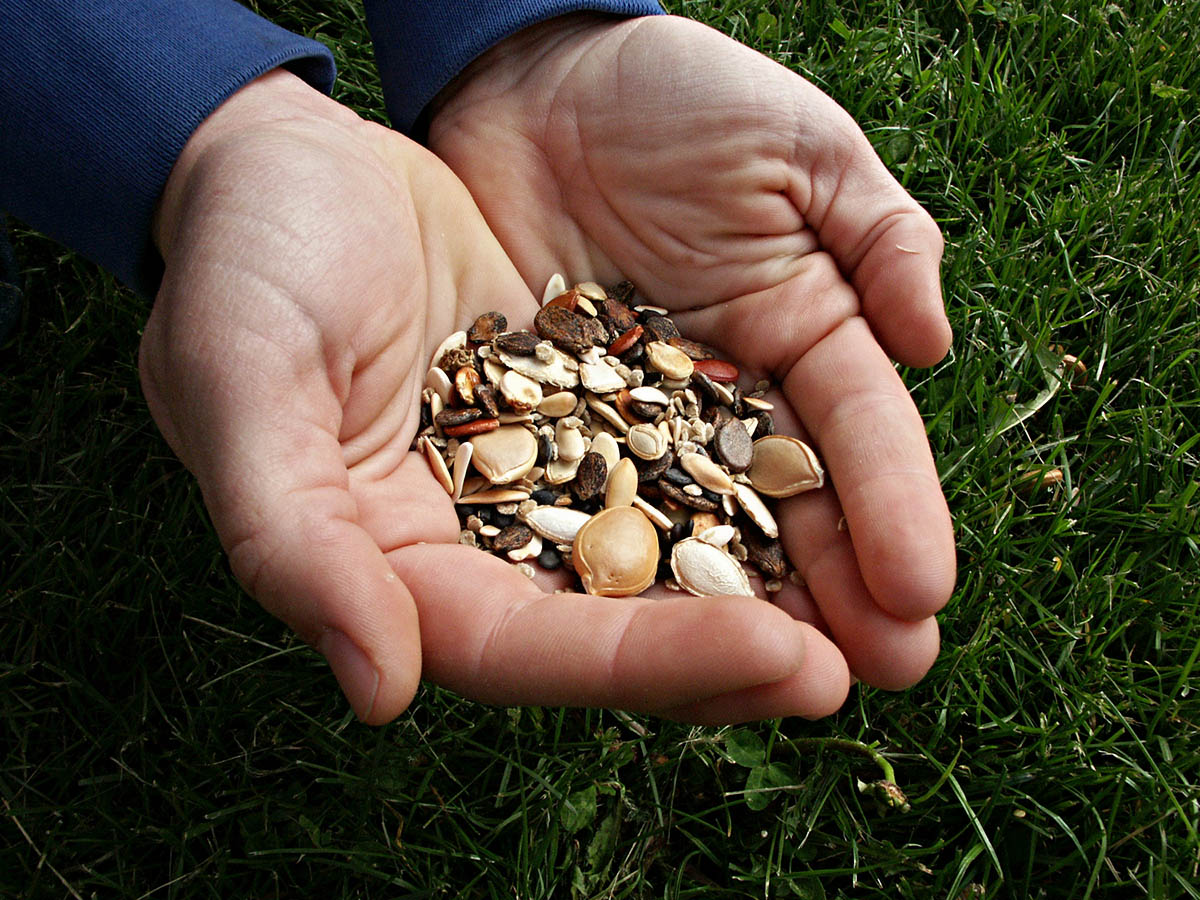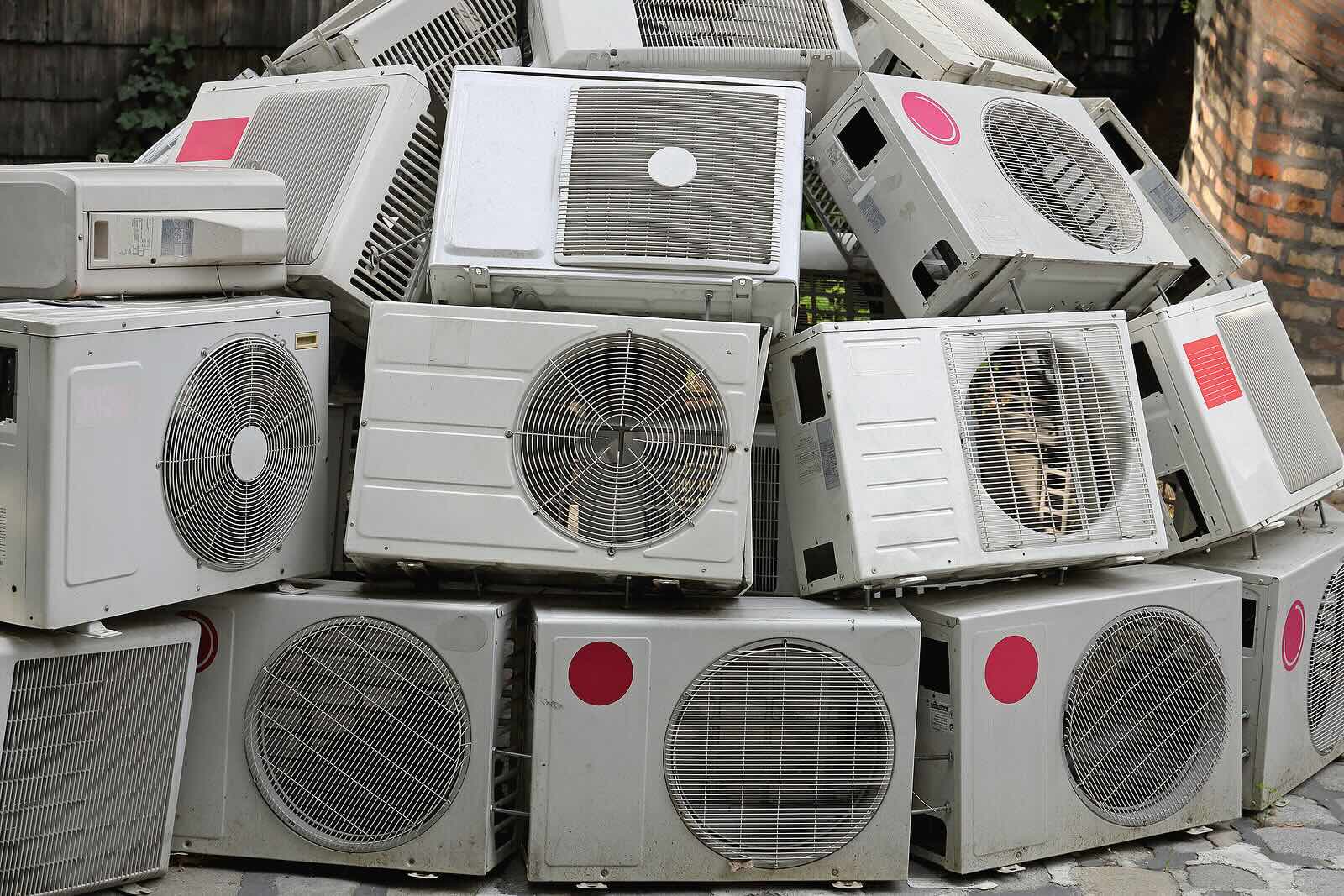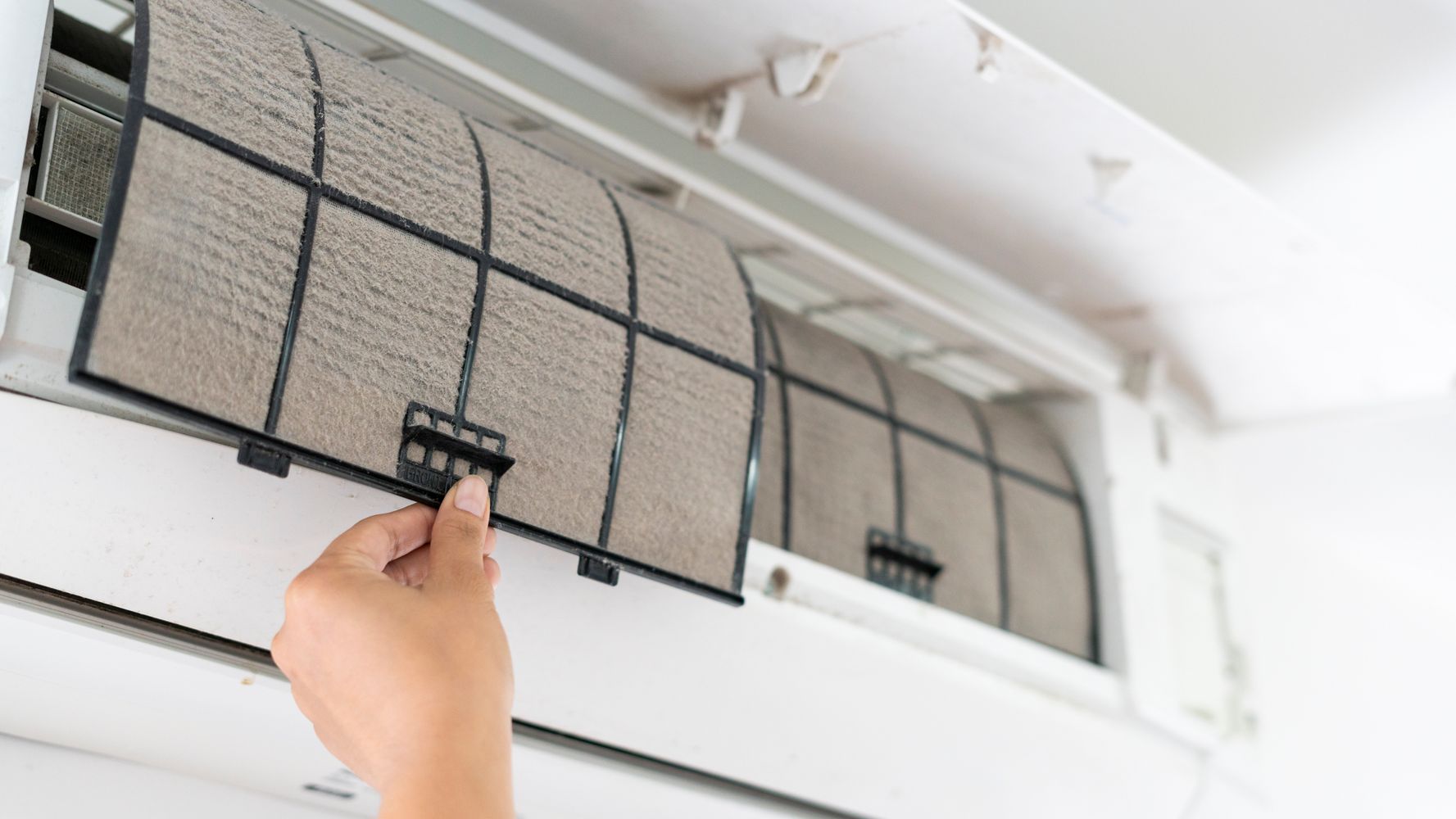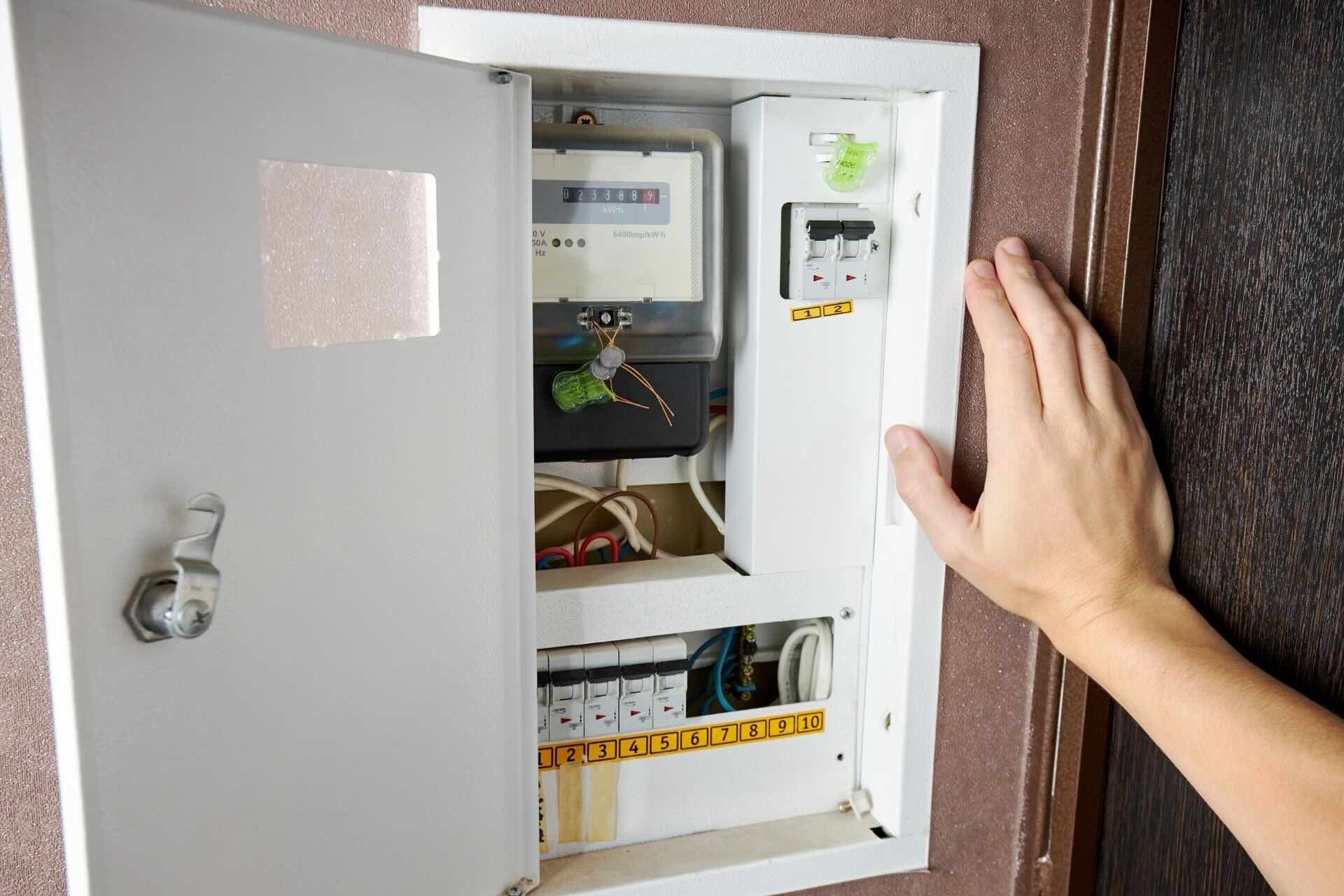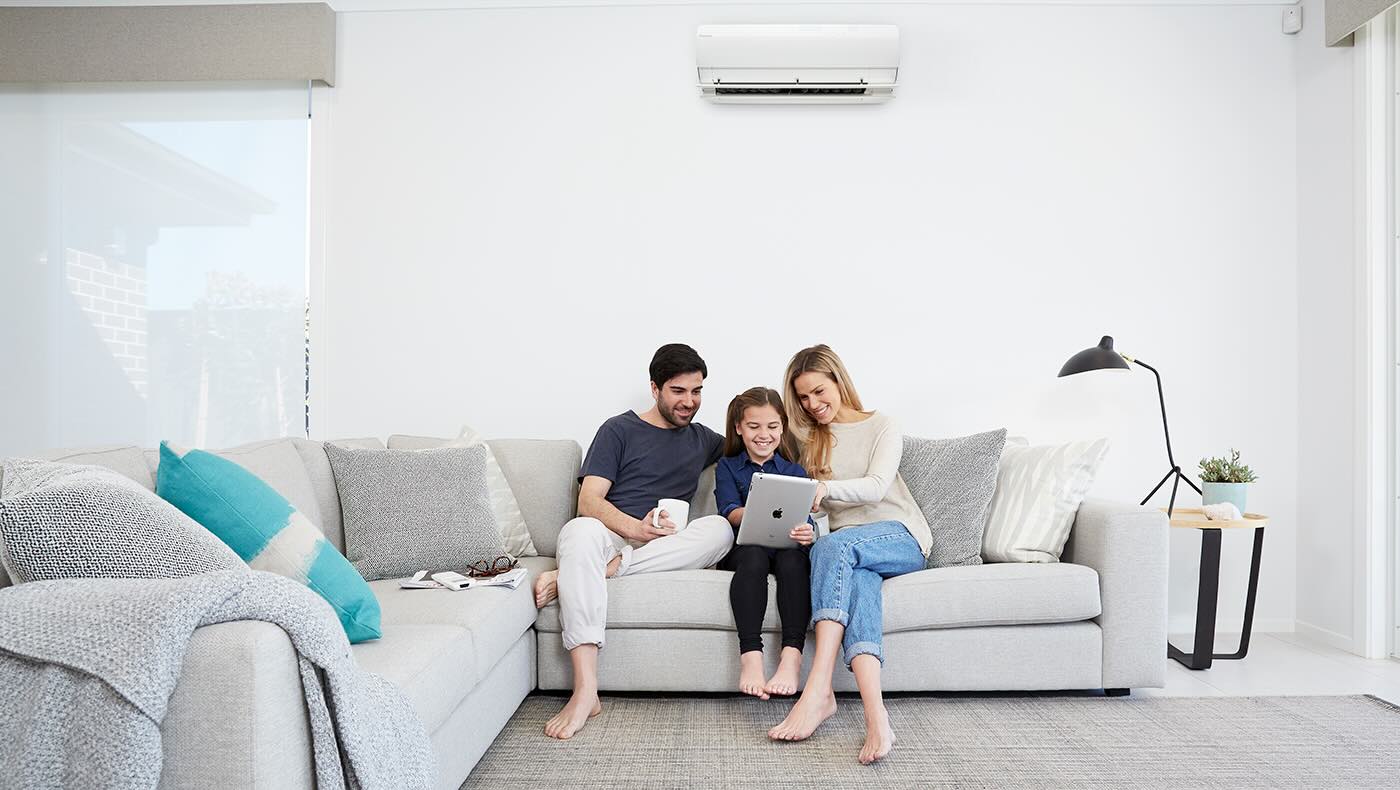Home>Home Maintenance>Where Was The Air Conditioner Invented
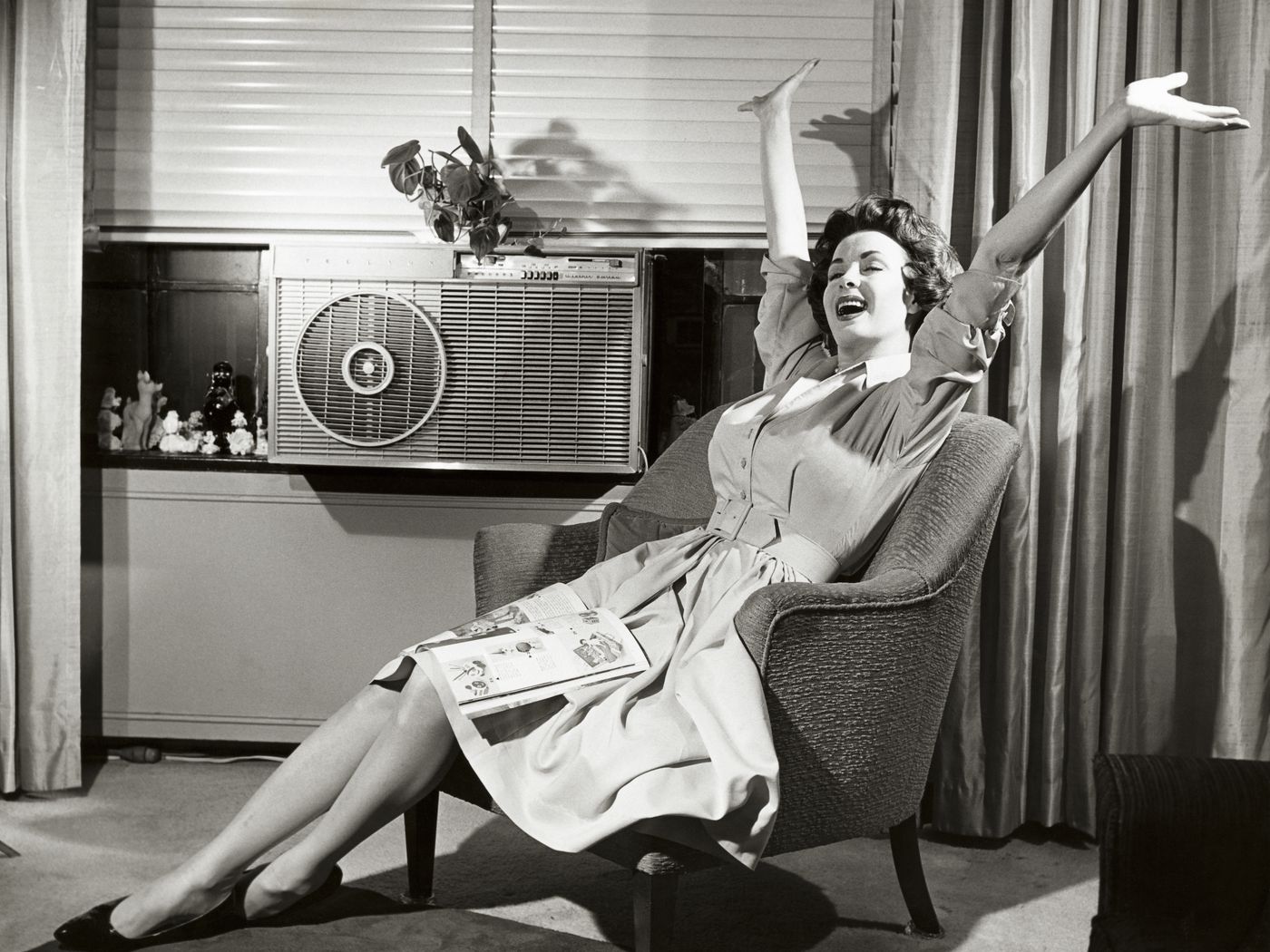

Home Maintenance
Where Was The Air Conditioner Invented
Modified: October 20, 2024
Discover the history of air conditioning and find out where it was invented. Learn about the importance of home maintenance for your AC system.
(Many of the links in this article redirect to a specific reviewed product. Your purchase of these products through affiliate links helps to generate commission for Storables.com, at no extra cost. Learn more)
Introduction
The invention of the air conditioner revolutionized the way we experience comfort in our homes and offices. It has become an integral part of our lives, especially during the scorching hot summer months. But have you ever wondered where the air conditioner originated from? Let’s embark on a journey through time to explore the origins of this incredible invention.
Before the invention of the air conditioner, ancient civilizations employed various techniques to cool their living spaces. For example, in ancient Egypt, people utilized the concept of evaporative cooling by hanging dampened reeds in windows or using pools of water to lower the temperature indoors.
Similarly, the ancient Romans ingeniously utilized an aqueduct system to circulate cold water through the walls of their buildings, providing a cooling effect. These ancient cooling techniques laid the foundation for the development of modern air conditioning.
Fast forward to the 19th century, when the first inklings of modern air conditioning began to emerge. In 1842, a Florida doctor named John Gorrie designed a machine that blew air through buckets of ice, creating a cooling effect. Gorrie’s invention was primarily intended to provide relief for his patients suffering from tropical diseases, but it marked a significant step forward in the realm of cooling technology.
However, it was in the early 20th century that the modern air conditioner as we know it today was born. In 1902, a young engineer named Willis Carrier developed the first electrical air conditioning system. His invention, known as the “Apparatus for Treating Air,” utilized a combination of cooling coils and fans to regulate temperature and humidity in a printing company.
Carrier’s invention proved to be a groundbreaking development in the field of cooling technology. It not only improved air quality but also played a crucial role in safeguarding sensitive materials such as paper from the adverse effects of high humidity. The success of Carrier’s system paved the way for the widespread adoption of air conditioning in various sectors, including homes, offices, and even automobiles.
Key Takeaways:
- The modern air conditioner was invented by Willis Carrier in 1902, revolutionizing indoor comfort and air quality. It has since evolved with advancements in technology, making our lives more comfortable and productive.
- Ancient civilizations used innovative cooling techniques, laying the foundation for modern air conditioning. While air conditioning has greatly improved our quality of life, efforts are underway to develop more sustainable and energy-efficient systems.
Ancient Cooling Techniques
Long before the advent of modern air conditioning, ancient civilizations employed ingenious techniques to keep their living spaces cool. These ancient cooling methods may seem rudimentary compared to today’s advanced technology, but they were remarkably effective considering the limited resources available at the time.
In ancient Egypt, people harnessed the power of evaporative cooling. They would hang dampened reeds or mats in their windows, allowing the hot air to pass through the moist material. As the air evaporated the water on the reeds, it created a cooling effect, reducing the indoor temperature. Egyptians also used pools and fountains to create a humid atmosphere, further lowering the ambient temperature in their homes.
The ancient Romans were no strangers to innovative cooling techniques. They utilized a complex system of aqueducts to circulate cool water through the walls of their buildings. The cool water would absorb heat from the interior, providing a natural form of air conditioning. The Romans also took advantage of large public baths, which were not only for cleanliness but also served as places to escape the heat.
In ancient Persia, wind towers, known as “badgir” or “barjeel,” were prevalent. These towers were constructed on the roofs of buildings to catch the prevailing winds, directing the cool breeze into the living spaces below. The air would pass through a series of shafts and channels, cooling the interior and providing much-needed relief from the heat outside.
Across different ancient civilizations, the use of shade was a common cooling technique. Buildings were designed with overhanging roofs, covered walkways, and courtyards to shield occupants from the direct rays of the sun. The strategic positioning of windows and doors allowed for cross-ventilation, enabling a flow of fresh air throughout the space.
While these ancient cooling techniques may seem simple in comparison to today’s air conditioning systems, they highlight humanity’s quest for comfort and relief from the heat. The knowledge and innovation of our ancient ancestors laid the foundation for the advancement of cooling technology that we enjoy today.
Early Forms of Air Conditioning
After the ancient cooling techniques, the concept of air conditioning continued to evolve throughout history. In the 19th century, several inventors and innovators made significant contributions to the development of early forms of air conditioning.
In the early 1800s, an American inventor named Dr. John Gorrie made strides in cooling technology. He recognized the importance of controlling indoor temperatures, particularly in hospitals and other healthcare facilities. Gorrie developed a machine that blew air through buckets of ice, creating a cooling effect. His invention aimed to alleviate the suffering of patients afflicted by tropical diseases, as he believed that cool air could provide comfort and aid in their recovery.
Following Gorrie’s pioneering work, another notable figure in the history of air conditioning emerged in the late 19th century. Stuart W. Cramer, a textile mill engineer, coined the term “air conditioning” and introduced it as part of his textile manufacturing process. Cramer used the term to describe the process of controlling both temperature and humidity to improve the quality of yarn in textile production.
However, it was the brilliant mind of Willis Carrier that truly transformed the concept of air conditioning. In 1902, Carrier invented the first electrical air conditioning system. His invention utilized cooling coils and fans to regulate temperature and humidity in a printing company. Rather than simply blowing air over ice, Carrier’s system involved the circulation of air through a series of coils containing a refrigerant, which absorbed heat and cooled the air. This groundbreaking invention not only improved air quality but also laid the foundation for modern air conditioning technology.
Following the success of Carrier’s invention, air conditioning systems began to be used in various settings. The first commercial use of air conditioning was in theaters, where it provided relief to attendees during hot summer months. Air conditioning soon expanded to other areas such as department stores, offices, and public buildings.
Developments in air conditioning technology continued, with advancements in compressor designs, refrigerants, and control systems. By the mid-20th century, window units and central air conditioning systems became more widely available for residential use, transforming the way people cooled their homes.
Early forms of air conditioning laid the groundwork for the comfort and convenience we enjoy today. The innovations of Gorrie, Cramer, and most notably, Carrier, set the stage for the widespread adoption of air conditioning that would follow in the coming decades.
Willis Carrier and the Modern Air Conditioner
When it comes to the invention of the modern air conditioner, one name stands out as a pioneer – Willis Carrier. Born on November 26, 1876, in Angola, New York, Carrier dedicated his life to developing innovative solutions for controlling temperature and humidity.
In 1902, Carrier invented the first electrical air conditioning system. Known as the “Apparatus for Treating Air,” his invention marked a significant advancement in cooling technology. Unlike previous methods that relied on blowing air over ice or using fans to circulate air, Carrier’s system involved the circulation of air through a series of cooling coils.
Carrier’s invention revolutionized the way we experience comfort in indoor environments. His system provided precise temperature and humidity control, creating a more pleasant and productive atmosphere for various industries.
Beyond the cooling coils, Carrier introduced many innovations that laid the foundation for modern air conditioning technology. He developed the concept of “fractionation” – separating air into its primary components, including moisture removal. This breakthrough allowed for greater control over humidity levels, improving the overall comfort and air quality in indoor spaces.
Another significant contribution of Willis Carrier was his pioneering work on refrigeration. He developed the first system to use a refrigerant, specifically Dielene (later replaced by more efficient and environmentally friendly options), to cool the air. By removing the heat from the air and circulating it through the coils, Carrier’s system was able to achieve effective cooling.
Carrier’s air conditioning system proved to be highly beneficial in different industries. It helped preserve the quality of perishable goods, such as food and medicine, by controlling temperature and humidity levels. The printing industry also benefited greatly from Carrier’s invention, as it prevented the expansion and contraction of paper due to humidity changes, resulting in more precise printing and improved productivity.
The significance of Carrier’s invention did not go unnoticed. It quickly gained recognition, and in 1911, he founded the Carrier Engineering Corporation, now known as Carrier Corporation. The company continued to innovate and improve air conditioning technology, making it more accessible and efficient.
Carrier’s pioneering work paved the way for the mass adoption of air conditioning systems in offices, homes, theaters, and other public spaces. It transformed the way people live, work, and enjoy leisure activities, particularly in regions with harsh climates or high humidity.
To this day, Carrier’s legacy lives on, as his inventions and contributions continue to shape the HVAC (Heating, Ventilation, and Air Conditioning) industry. The modern air conditioner owes its existence to Willis Carrier, a visionary engineer who revolutionized our understanding of indoor comfort.
The air conditioner was invented in 1902 by Willis Carrier in Buffalo, New York. He created it to control the humidity in a printing plant.
Spread and Advancements in Air Conditioning Technology
Following Willis Carrier’s invention of the modern air conditioner, the technology quickly gained traction and underwent significant advancements. Its impact spread beyond specific industries, with air conditioning becoming more accessible and affordable for a wide range of applications.
As the benefits of air conditioning became apparent, demand grew for systems that could provide comfort in various environments. In the 1930s, window air conditioning units were introduced, offering a more convenient and cost-effective option for residential cooling. This allowed homeowners to enjoy the benefits of air conditioning without the need for extensive ductwork or central systems.
The advancements in refrigeration technology also played a vital role in improving air conditioning systems. Freon, a chlorofluorocarbon (CFC) refrigerant, was developed in the 1920s and became widely used in cooling systems. However, in later years, the negative impact of CFCs on the Earth’s ozone layer was discovered, leading to the phasing out of CFCs and the development of more environmentally friendly refrigerants.
Another significant advancement in air conditioning technology came in the form of central air conditioning systems. These systems use a network of ducts to distribute cooled air throughout a building or home. The introduction of central air changed the way large spaces were cooled, providing consistent and even temperatures. It became a standard feature in commercial buildings, schools, hospitals, and other facilities.
With the advent of digital technology, air conditioning systems have become more efficient and precise. Programmable thermostats allow users to set specific temperature schedules, reducing energy consumption when cooling is unnecessary. Additionally, advanced sensors and control algorithms enable systems to adjust temperature and airflow based on occupancy and user preferences, optimizing energy efficiency.
The development of ductless mini-split air conditioners brought further flexibility and efficiency to cooling solutions. These systems consist of an outdoor unit connected to one or more indoor units, allowing for zoning and personalized comfort. Ductless systems are ideal for retrofitting older buildings or individual room cooling and offer energy savings by eliminating the energy loss associated with central ductwork.
Furthermore, advancements in air purifying technology have become integral to air conditioning systems. HEPA filters and electrostatic precipitators can capture airborne particles, allergens, and pollutants, improving indoor air quality. Some modern air conditioning units even incorporate UV disinfection to eliminate bacteria and viruses, contributing to healthier indoor environments.
The integration of smart home technology has also impacted air conditioning systems. Wi-Fi connectivity allows users to control and monitor their air conditioners remotely through smartphones or smart home assistants. Smart algorithms and machine learning algorithms can learn and adapt to occupants’ preferences, optimizing comfort and energy efficiency.
As air conditioning technology continues to advance, ongoing efforts are being made to improve efficiency, reduce environmental impact, and enhance user experience. The demand for eco-friendly refrigerants, improved energy efficiency ratings, and sustainable cooling solutions is driving further innovation in the industry.
Over the years, air conditioning has become an indispensable aspect of modern living. From homes to businesses, the advancements in air conditioning technology have made us more comfortable and productive in various environments, even in the most extreme weather conditions.
Read more: Where Is The Fan Motor On An Air Conditioner
Impact of Air Conditioning on Society
The advent of air conditioning has had a profound impact on society, transforming the way we live, work, and socialize. From improving comfort to enabling advancements in various industries, air conditioning has become an essential part of our modern lifestyle.
One of the most significant impacts of air conditioning is its role in creating more comfortable and livable indoor environments. Before the widespread adoption of air conditioning, people had to rely on natural ventilation, shade, and other primitive cooling methods to combat the heat. Air conditioning systems have revolutionized this, allowing us to maintain comfortable temperatures indoors regardless of the outdoor climate. This has greatly enhanced our quality of life, providing relief from oppressive heat and humidity.
Air conditioning has also transformed the way we work. In commercial buildings, offices, and factories, air conditioning has created more productive and efficient work environments. By regulating temperature and humidity, air conditioning systems help to optimize employee comfort and well-being, leading to improved concentration, productivity, and overall job satisfaction.
Moreover, air conditioning has had a significant impact on industries that rely on controlled environments. For example, in the healthcare sector, air conditioning plays a crucial role in maintaining hygienic conditions and controlling the spread of airborne pathogens. Hospitals, clinics, and laboratories require precise temperature and humidity control to ensure patient comfort and the integrity of sensitive medical equipment and supplies.
The entertainment industry has also benefited greatly from air conditioning. Theaters, cinemas, and concert venues rely on air conditioning systems to provide a comfortable environment for audiences, even during hot summer months. This enables people to enjoy cultural and leisure activities year-round, regardless of outdoor temperatures.
Furthermore, air conditioning has spurred the growth of entire industries that specialize in HVAC (Heating, Ventilation, and Air Conditioning) systems. This has provided employment opportunities for skilled workers, including technicians, engineers, and researchers, contributing to economic growth and technological advancements.
However, it is crucial to acknowledge that air conditioning also poses environmental challenges. The energy consumption required for cooling buildings contributes to greenhouse gas emissions, contributing to global warming and climate change. Efforts are being made to mitigate these impacts through the development of more energy-efficient systems, utilization of eco-friendly refrigerants, and the promotion of sustainable cooling practices.
Overall, the impact of air conditioning on society has been overwhelmingly positive. It has improved our comfort, productivity, and well-being, enabling us to create controlled indoor environments that cater to our needs. As technology continues to evolve, the focus remains on achieving a balance between comfort and sustainability to ensure a more sustainable and environmentally conscious future.
Conclusion
The invention and evolution of air conditioning have transformed the way we experience comfort in our homes, workplaces, and public spaces. From ancient cooling techniques to Willis Carrier’s groundbreaking invention, air conditioning has come a long way to become an integral part of our modern lifestyle.
Ancient civilizations employed innovative methods to keep cool, such as evaporative cooling in ancient Egypt and aqueduct systems in ancient Rome. These techniques laid the foundation for the development of modern air conditioning.
Willis Carrier’s invention of the modern air conditioner marked a turning point in cooling technology. His electrical air conditioning system set the stage for precise temperature and humidity control, revolutionizing industries and improving air quality in various environments.
Advancements in air conditioning technology, such as the introduction of window units, central air conditioning, and ductless systems, further expanded its accessibility and efficiency. Smart technology integration, improved energy efficiency, and enhanced air purification have also played pivotal roles in the continued advancement of air conditioning systems.
The impact of air conditioning on society is widespread. It has greatly enhanced our quality of life by providing comfort in extreme climates, improving productivity in the workplace, and enabling the growth of industries that rely on controlled environments.
However, it is essential to recognize the environmental challenges posed by air conditioning, as it contributes to energy consumption and greenhouse gas emissions. Efforts are underway to develop more sustainable, energy-efficient systems and promote eco-friendly practices to mitigate these impacts.
In conclusion, the invention and spread of air conditioning have had a transformative effect on society. It has redefined our standards of comfort, enabled technological advancements, and improved various aspects of our daily lives. As we move forward, the continued focus on sustainability and energy efficiency will be crucial in shaping the future of air conditioning technology.
Frequently Asked Questions about Where Was The Air Conditioner Invented
Was this page helpful?
At Storables.com, we guarantee accurate and reliable information. Our content, validated by Expert Board Contributors, is crafted following stringent Editorial Policies. We're committed to providing you with well-researched, expert-backed insights for all your informational needs.

